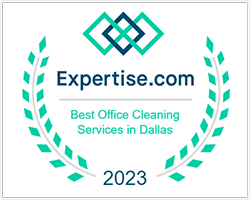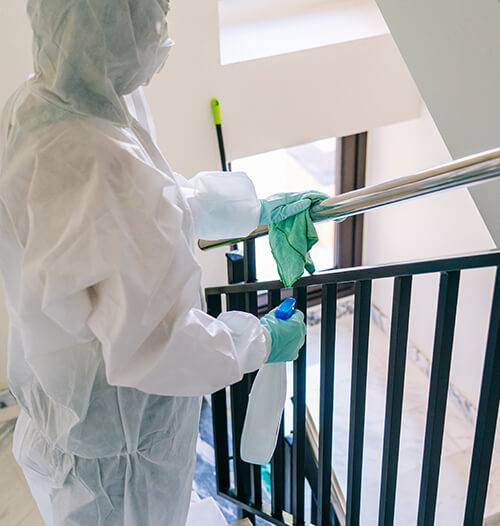The Difference Between Sanitation, Sanitization, and Disinfection Services
In a world where cleanliness and hygiene have never been more critical, understanding the distinctions between sanitation, sanitization, and disinfection cleaning services is essential.
Whether you’re a business owner or simply someone curious about maintaining a clean and safe work environment, this guide is for you.
Prestige Janitorial Services’s commercial janitorial experts explain the nuances of sanitation, sanitization, and disinfection, exploring their unique purposes and when to choose one over the other.
By the end of this read, you’ll clearly understand these services, empowering you to make informed decisions about maintaining a healthy and hygienic workspace.
Introduction to Commercial Janitorial Services
All commercial janitorial services fall under one of the following categories:
- Sanitation
- Sanitization
- Disinfection
Below, we’ll explore how each differs and how understanding the differences between these services—and knowing when to use them—helps you protect your workforce and clientele, safeguard your budget, and eliminate downtime.
Understanding Sanitation
Sanitation cleaning services are cost-effective and play a crucial role in commercial cleaning, offering a distinct level of cleanliness that’s particularly effective in specific scenarios. Sanitation services focus on maintaining a clean and hygienic environment by reducing the number of harmful microorganisms to safe levels.
This level of cleaning is often the most economical choice for businesses or facilities where there’s no immediate threat of contagious diseases or outbreaks, including:
- Retail stores
- Offices
- Banks
- Hotels
- …and more!
In commercial cleaning, sanitation involves the removal of visible dirt, debris, and common germs from surfaces and objects.
Sanitation typically requires using cleaning agents and practices to achieve cleanliness and hygiene but may not necessarily eliminate all harmful microorganisms. It’s a preventive measure to create a clean and healthy environment.
When to Choose Sanitation Services
Sanitation is highly appropriate for routine maintenance and daily cleaning tasks and in settings where preventive measures are sufficient to ensure a safe and healthy environment. It’s particularly effective in spaces where regular cleaning and the reduction of common germs are the primary goals.
Some of the most-requested sanitation services include:
- Routine surface cleaning
- Restroom sanitation
- Floor sanitation
- Trash removal
- Kitchen and breakroom cleaning
- Fixture and hardware cleaning
- Dusting
- Lobby and reception area cleaning
- …and more!
Exploring Commercial Sanitization
Sanitization is a step further in the cleaning process than sanitation. It involves the reduction of harmful microorganisms to a level considered safe according to established standards and guidelines.
It’s a targeted approach to killing specific pathogens and bacteria that can cause illness or contamination. Sanitization often uses specialized sanitizing agents and methods to achieve this level of microbial reduction. While sanitization effectively reduces the risk of disease transmission, it may not eliminate all types of pathogens, particularly viruses and spores.
When Sanitizing Services Are Most Appropriate
Commercial sanitization services are most appropriate when a higher level of microbial reduction is required compared to standard sanitation but where complete disinfection may not be necessary.
This level of cleaning is particularly suitable for environments that want to strike a balance between effective pathogen control and cost-effectiveness. Sanitization services are a prudent choice for businesses and facilities with a moderate risk of disease transmission or contamination, like schools, restaurants, and office spaces.
It ensures common pathogens are effectively reduced to safe levels, offering more protection than sanitation alone while being less resource-intensive and costly than full-scale disinfection. Sanitization strikes a crucial balance, making it a practical and appropriate option for various commercial settings.
Unpacking the Nuances of Proper Disinfection Services
Disinfection is the highest level of cleaning in terms of microbial reduction. It involves using chemical disinfectants or specialized equipment to eliminate or destroy virtually all pathogenic microorganisms, including bacteria, viruses, fungi, and spores.
Disinfection goes beyond sanitation and sanitization by achieving a higher level of microbial control.
It’s commonly employed in healthcare settings, food processing, and situations with a high disease transmission or contamination risk.
When Disinfection Service Is Required
When the laws and safety regulations that govern an industry call for targeting pathogens and germs to reduce the viral, bacterial, and spore load to a safe minimum, disinfection service is required. This level of cleaning is indispensable in settings where there’s a high risk of contagious diseases and outbreaks or where stringent hygiene standards must be maintained.
Healthcare facilities, laboratories, food processing plants, and environments with vulnerable populations, like nursing homes, require thorough disinfection to ensure the highest level of pathogen control.
Disinfection services use specialized disinfectants and methods to eliminate a broad spectrum of microorganisms, providing the highest assurance against disease transmission and contamination.
Understanding the Role of Contact Time in Commercial Cleaning Solution Efficacy
The role of contact time in commercial cleaning solution efficacy can’t be overstated. Contact time, also known as dwell time, refers to the period during which a cleaning or disinfecting solution remains in direct contact with a surface or object.
It plays a critical role in the effectiveness of the cleaning process. During this time, the cleaning solution needs sufficient moments to effectively break down and eliminate contaminants, bacteria, viruses, and other microorganisms.
The duration of contact time varies depending on the specific cleaning product and its intended purpose. Ensuring the solution has enough time to work its magic is crucial. Rushing through the cleaning process and not allowing adequate contact time can significantly reduce the cleaning solution’s efficacy, potentially leaving behind harmful pathogens.
Whether cleaning, sanitizing, or disinfecting, following manufacturer-recommended contact times is essential to achieve the desired level of cleanliness and hygiene in commercial cleaning settings.
You’re Ready to Invest in Effective and Affordable Commercial Cleaning Services
Sanitation focuses on general cleanliness and reducing common germs. Sanitization targets specific pathogens to create a safer environment. Disinfection is the most thorough method, eliminating a broader range of microorganisms.
The choice between these levels of cleaning in commercial settings depends on the specific requirements and laws that govern your industry, your budget, and the risks present in your commercial space.
Now that you understand the differences between the three, it’ll be easier to work with your commercial cleaner to decide where to allocate your budget. In doing so, you’ll be able to capture the most savings while ensuring your employees and clients are protected from risks associated with the spread of harmful pathogens.
Do you have further questions about which commercial cleaning methods are most appropriate for your facility? The licensed cleaners at Prestige Janitorial Services are standing by, ready to help. Reach us at (972) 372-9071 for all the information you need to have confidence in the janitorial services and methods you select.



